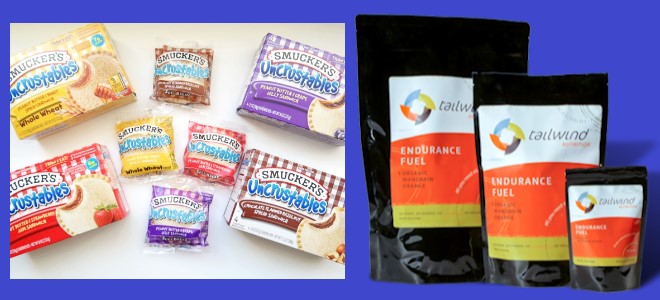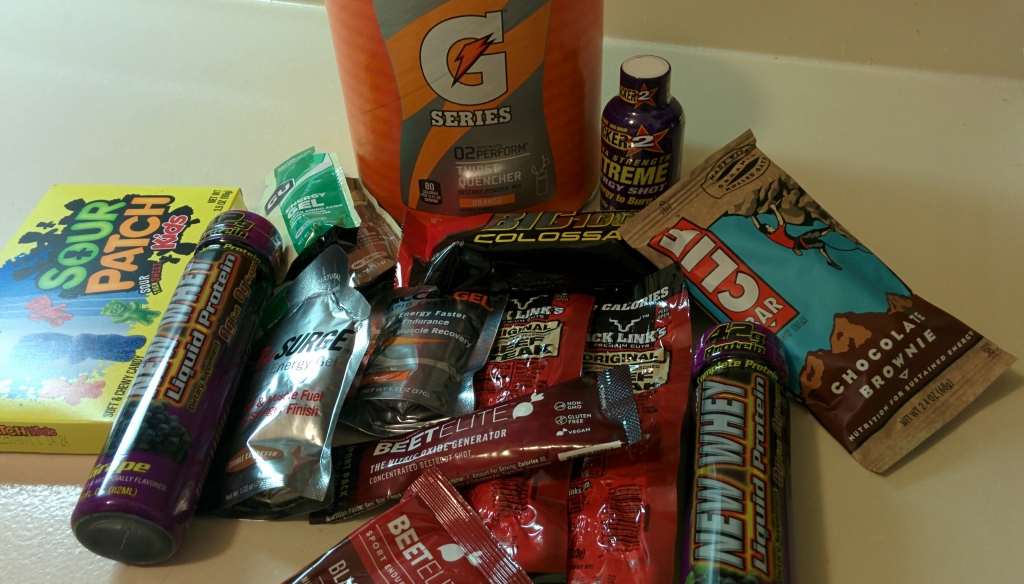 **Updated for 2017**
**Updated for 2017**
The talk of race nutrition has already begun. The fact that the Toughest Series was implemented for 2017 means a lot of people have had the opportunity to test their nutrition selections. However, the duration of World’s Toughest Mudder (WTM) means that it is another animal altogether. The fact that I’m a five-time veteran of WTM has taught me that nutrition and training prep go hand in hand as far as performance at this event goes.
The sad thing that I see is many of the competitors out there are merely sheep following the lead of the top athletes. Let me be the one to shine the light on you poor souls. Those leaders are wolves! They are carnivores that will eat you alive if you attempt to follow them. The top people in any sport are Outliers.
In addition to their hardcore training, these people have a “specific set of skills” or attributes that allow them to set themselves apart from the pack. The key thing to understand when it comes to training, as well as the race nutrition, is that you must find what works for you. This might mean trial and error, but that doesn’t mean that you shouldn’t consider what “Science” says as well! J So here goes my Who, What, When, Where, and How’s to WTM race nutrition:
Who:
The “who” is you silly! Amelia Boone might love Pop Tarts, Kevin Chow will have his Tailwind, and we know Mathieu Lo and just about everyone who attends the WTM Champions Brunch loves bacon. However, these may not work for you. Dean Karnazes ate everything under the sun (26,498 calories) when he ran his 350-mile world record run in just under 89 hours. That averages out to 456 calories an hour!!!

Research shows that the average endurance athlete can absorb about 350-400 calories/ hour while exercising (assuming they practice eating while training). If you are following the guidelines of the International Society of Sports Nutrition, this will equate to 50-60 gr of carbs, 15-20 gr of protein and 10 or so gr of fat each lap at the WTM (depending on your size and level). I recommend at least some of this food be taken in during the lap and then loading up in the pit, but more on this later.
What:
 The items you choose to eat are largely a matter of practice and preference. The thing to remember on this is the foods that you choose should be the OPPOSITE of the foods that you should be eating as a part of your every day healthy diet. The competition foods need to calorically dense, highly refined/ processed carbs that are low in fat.
The items you choose to eat are largely a matter of practice and preference. The thing to remember on this is the foods that you choose should be the OPPOSITE of the foods that you should be eating as a part of your every day healthy diet. The competition foods need to calorically dense, highly refined/ processed carbs that are low in fat.
These types of foods absorb into your system more easily/ quickly and provide less bulk in your gut. Engineered foods like sports drinks, shakes and bars are great choices for this but they aren’t the only thing. The WTM is all about “the suck!” This means comfort foods are a must in order to lift your spirits when you are dragging… or say traipsing through a sandstorm I the middle of the night. I want you all to remember your protein intake as well.
Research shows that glycogen uptake is maximized then the carb: protein ratio in each meal is 4:1. Protein is also important because we will be in a ketogenic state for much of this race and use protein for energy. To combat the breakdown of our muscles we need to make sure they are getting those Amino acids as well.
I will include a food list of recommended items at the end of this review.
When/Where:
You must eat and drink constantly throughout the event in order to keep fueled. If you wait until you are hungry or thirty to replenish then you have already failed!!! It takes a minimum of about 18-24 hours to replenish your muscle glycogen stores after strenuous exercise much less while you are still moving. Some key points to remember prior to the event: Start carb loading about 5 days before the event. Take in 30-50% more carbs that you have been eating. I even utilize a carb depletion phases during training to allow my body to adjust to fuel in this state. I do this again starting about 13 days out and then at 5 days I start loading.
On the day prior to the event make sure that you eat a lot of carbs while limiting your excess fat at every meal. Please be careful on the portions at the annual Community Dinner too. You don’t want to spend the extra 4 hours we have pre-race on Saturday in the bathroom. You also want to up your electrolyte content on the day prior to the race since the Sodium/Potassium pump system has a correction period of about 18 hours.
The morning of the event should include a high carb and low-fat meal. Fat not only slows the absorption of the meal, but it also can cause gastric distress during exercise leading to “the trots.” Fat, however, is not the only culprit of digestive issues during exercise. Keep in mind that single source sugar can also cause problems so try not to eat too much fructose or sucrose at one time before nor during the race. This is the reason that products like Gatorade and Tailwind utilize two forms of sugar in their products. During the race, I suggest having an electrolyte drink either in your hydration pack or at least as your main source of fluids in the pit. Liquids absorb quickly so this will help you immensely. Tailwind seems to be the most highly recommended for this purpose.
During the pit stops, have a plan with about what you need to eat so you get enough calories. You will get less hungry as you become more tired. This is a natural effect as your body is trying to conserve digestion energy to keep you moving figuring that you will eventually stop to fuel. This has the opposite effect on WTMers though because we can’t stop moving. You simply have to keep eating! Again, this is where calorically dense foods and engineered foods help you get in those calories. As far as hydration goes, your body needs about 8 oz of water every 15 minutes (1 liter per hour) during exercise.
The easiest way to ensure you get this is to have a hydration pack but as long as you drink when you can then you will be fine. I drank about 25 oz per lap on the course and another 8 oz in the pit (14 laps in 25.5 hours) last year and my level was spot on for me. A great gauge on this is how often you urinate. If you are doing so once a lap then cut back on the fluids. If it’s like once every six hours then you want to pick up the pace! FYI, please do not plan on ingesting the lake water from Lake Las Vegas and using it to stay hydrated.
Many people accidentally do this every year and this can lead to a lot of issues… Yikes!!! As for what to take in after the WTM, your recovery starts immediately, so plan on eating real food. Afterwards, expect that “food baby” to wipe you out the rest of the way, so plan on going to bed early and continuing with your recovery on Monday!
How:
Well, I’m thinking the best way to fuel is to open mouth and insert food and drink! However, some of you crazies may want to try a loaded I.V. drip in the Pit. If this is the case then I know a couple nurses from a PIT crew that can probably help. Hell, if you paid them enough they might even run a catheter so you do have to pee in your wetsuit!!!
Well, that brings my long winded diatribe to a close. You will find my long list of preferable food choices for your shopping list below. Some of these items are from athletes such as Miguel Medina and myself at WTM as well as Ryan Woods and Ryan Atkins at Toughest Mudder.
Limited Food List:
- Liquid Options
- Gatorade
- Tailwind
- Hammer Nutrition
- Cytomax
- Endurox R4
- Acclerade
- CarboPro
- Gels/Gummies
- AccelGels/ GU/ Boom
- Clif Blocks/ Gatorade Chews/ Sport Beans
- Apple Sauce/ Fruit Sauces
- Energy Bars
- Clif Bars/ Powerbars/ Complete Protein Cookies
- Granola Bars/ Nutrigrain Bars/ Snickers Bar
- Real food
- PBJ/ Uncrustables
- Pop Tarts
- Pizza
- Sub Sandwiches/ wraps
- Fruit (Bananas canned pears and peaches, etc)
- Beef jerky/ bacon
- Trail Mix/ nuts
- Pickles/ Pickle Juice/ Pickle Juice pops
- Jelly Beans/ Candy
- Honey and white bread
- Other options
- Hammer Salt Tabs
- Hammer Perpetuem Solids
- Mustard Packets
- Stimulants- Cellucor/ caffeine pills/ Monster/ Red Bull
- Notes
- Caffeine- a special note on this. It acts on chemicals in the brain. If you take too much at one time it will use these chemical and have a limited effect for a period of time after. I recommend test yourself and only take the amount needed for effective and only take it when you really need it. Taking too much too early may have you dragging long before sunrise. Remember that when you’d normally be having your morning cup of Joe we will still have 8 hours of racing left!!!
- Be aware of your Sodium intake- You will need to take into the account amount of total sodium you have taken in. For example, Tailwind is designed to be your sole source of nutrition during a race so it is fairly high in sodium. Combining a product such as this with other high sodium foods such as pizza could result in negative consequences. One such issue is osmotic diarrhea. This is a condition where a high concentration of sodium in your bowel actually draws water into your intestines resulting in diarrhea… A very bad thing when you are wearing a wetsuit.
- Be careful not to ingest too much coffee before or during the event! This can end up having you staring at the back of a Port-A-John door a few extra times during the race.


Great article man. I’ll see you out there.
Last year post-WTM Hunter McIntyre said PBJ sandwiches were what kept him going.
I see the BeetElite!
Great info, cant wait to tackle worlds in less than 2 months!
Lol, thanks for the shoutout! Tailwind and uncrustables ftw!